This topic is intended for Windows 10 gurus who have not enjoyed enough complexity today, and you’re yearning for more 🙂
A probable bug deep inside Windows 10 appears to be mismanaging drive letters A thru Z.
For me, this bug first appeared after Susan strongly recommended updating Windows to 22H2.
On one of our Windows 10 PCs, that Windows Update simply would not complete successfully, no matter how many different ways we tried. There’s a very long thread somewhere in this Forum with all the dirty details of that Windows adventure.
During our many attempts, we did notice that network drive letters were being scrambled by that major Windows Update. So, that was a strong symptom of an OS bug buried ultra deep.
Most recently — over the past few days — we’ve been moving a SSD enclosure from an obsolete PCIe 1.0 PC to a much newer HP Z240 tower workstation.
That SSD enclosure hosts 6 x 2.5″ SSDs — one of the excellent products from IcyDock.
Without thinking there might be serious problems with drive letter A:, we temporarily assigned drive letters to A: and B: to a WDC HDD stored inside an external USB 3.0 enclosure.
This resulted in the kind of havoc that produces symptoms totally unrelated to drive letters A: and B: .
Just to illustrate, Task Manager started showing 100% utilization on several different SSDs simultaneously.
Then, RESTART and “This PC” stopped working. From that point forward, the only way out of that situation was to hit the Power Button and hold it there until the motherboard BIOS finally SHUTDOWN.
Power-cycling the motherboard also resulted in intermittent failures: the most annoying thing was a warm RESTART that booted up correctly, no mas problemas!
BECAUSE THE SYSTEM DID BOOT CORRECTLY, SOME TIMES AND SOME TIMES NOT, there was no warning nor any hints that drive letters A: and B: might be the culprits.
If anyone else has experimented with drive letters A: and B: (which were originally assigned to floppy disks in another ancient century), I’d love to share some war stories with you.
BOTTOM LINE:
Meanwhile, it seems too simple to change Disk Management so it does not show either A: or B: drive letters as “available” if the User wishes to change a drive letter for any reason.
p.s. Sorry for ranting here; but, this latest Windows 10 adventure has been very time-consuming, to put it mildly.



